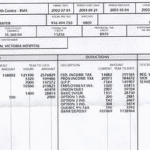
Every bankruptcy debtor yearns to rebuild their credit. Whatever drove them to bankruptcy did no favors to their creditworthiness.
The need for a new loan can be imperative to a homeowner in Chapter 13 who needs a better interest rate, a recomputed loan term, or just needs out of Chapter 13 with a discharge.
Here’s what it takes to get a home loan after filing bankruptcy, from California mortgage broker who’s been doing it for a long time in California.
New real estate financing and Chapter 13 are not as incompatible as some assume.
A debtor can obtain financing during a Chapter 13 by paying off the creditors in full or by remaining in the plan.
If the borrower chooses to remain in Chapter 13, for the most part, all that is required is to pay off liens on the property and pay the remaining debts as provided by the plan.
Liens include the mortgage(s), HOA dues, outstanding property taxes, and any other debt with a lien
on the property — including the landscaper who filed a contractor’s lien!
As a bankruptcy lawyer, you’re in charge of advance planning for a new real estate loan. The last thing you want to encounter is a last-minute “emergency”
dropped on you by the trustee, foreclosing lender or debtor.
All too often, by the time you catch wind of a seemingly “small detail”, the damage is already done.
Here’s what to emphasize to debtors when it comes time to refinance, so that we can give them the best terms possible. The debtor likely won’t realize it at the time, but your help in passing this information along could be invaluable to them.
We’re going to touch on three key areas:
- trustee payment histories,
- post-petition mortgage payments, and
- credit scores.
This information is critical to your clients. But, to change-up and old expression for our purposes, “You can lead a horse to water, but you can’t make
their trustee payments for them.”
In the end, it’s up to the debtor to follow through on this advice.
Here’s the overview.
Trustee payment history.
 Lenders want to see your client’s history.
Lenders want to see your client’s history.
When it comes to trustee payment histories, underwriters will poke and prod in search of any signs of missed payments.
At this point in time, the best financing option will be an FHA loan. With a current or discharged Chapter 13 within the previous two years, FHA requires trustee payments to be paid in the same month in which they are due.
We can still secure financing if they haven’t been keeping up with the agreed-to payments. It just means they are unlikely to receive as favorable terms on the loan.
We have several programs available that allow for missed payments. These programs are lenient when it comes to a relief from stay, multiple missed post-petition payments,
newly filed cases, and multiple bankruptcy filings (among other challenges).
Post-petition mortgage payments.
 The debtor’s history of mortgage payments fall under the same umbrella as chapter 13 trustee payments we discussed above.
The debtor’s history of mortgage payments fall under the same umbrella as chapter 13 trustee payments we discussed above.
The type of program a debtor can qualify for is predominantly influenced by the post-petition mortgage payment history; one missed payment can lead to an FHA denial, or the loan being
downgraded to a more lenient, yet more expensive program.
We recommend borrowers document each mortgage payment they make as lenders stop reporting this information to credit bureaus. Recently, we have a transaction
between Wells Fargo and a debtor where evidence of canceled checks proved invaluable.
Here’s how it went down: Wells Fargo claimed the debtor missed a postpetition mortgage payment four years ago (this is in dispute). Wells Fargo refused to say the payments were current, by itself this would have killed the loan or cause a downgrade.
Using the debtor’s canceled checks, we were able to demonstrate the mortgage was in fact, “paid as agreed.”
Credit score
Credit score greatly affects the rate and cost of the future refinance, as well as the loan-to-value, or how much the homeowner can borrow —and more importantly, whether they qualify or not.
 Those going through a chapter 13 discover most loan options will require a minimum credit score, somewhere in the ballpark from the low 500’s to 620, all depending on the details.
Those going through a chapter 13 discover most loan options will require a minimum credit score, somewhere in the ballpark from the low 500’s to 620, all depending on the details.
So how does this play out in the real world? A difference of one point, say… a 619 vs. 620 credit score, can translate to thousands of dollars. In high loan-to-value situations, a minimum 620 credit score may be the minimum threshold for having a home loan approved.
We spend a good amount of time working with borrowers to raise their credit scores(click for info on credit scores). This not only helps them qualify for a mortgage but also saves them thousands of dollars in closing costs.
It’s a tedious process, to say the least; credit bureaus are notoriously hard-nosed when it comes to submitting all the documentation required to make changes to credit reports. And, in some cases, it may require direct contact with all three credit bureaus.
Building credit
There are two ways to tackle rebuilding a credit score.
The first is get new credit cards as soon as possible.
A lender typically wants to see positive payment histories on at least two credit accounts before they are willing to extend a lower rate to a borrower. While nontraditional credit can satisfy this, the best way to reestablish credit is still through conventional means, such as credit cards.
Ideally, obtain a secured credit card or two anytime after the case is filed.
The second is to adopt the advice of The Beatles and “get by with a little help from [their] friends.”
Having a friend or family member add the debtor to their credit card as an authorized user can boost their score. This card, and its payment history, will show up on the debtor’s credit report.
As a side note, it should be a creditor who reports to all three credit bureaus (Experian, Equifax, and TransUnion). This will show up on the client’s credit report with an “A” designation, the “A” symbolizing the first letter of “Authorized user.”
And, so long as a low balance is maintained, and payments are made as agreed, this credit history can give the debtor a boost in their credit score.
We do have investors and lenders that will work with individuals carrying a credit score of 500, but risk always comes in the form of higher rates.
Worth the work
Given the huge savings that come with a higher credit score, we often focus on boosting client’s credit scores, so they can reap the savings. The downside is, of course, the process requires extensive documentation, which can delay the entire process.
So start immediately.
One final note, “But, it was credit cards and loans that got me into this mess.” Many debtors hold the view that credit “did them in.” Therefore, during and after a chapter 13 bankruptcy, they will avoid credit at all costs.
But, avoidance is not the answer; learning to manage credit responsibly is the key to winning the credit tug of war.
About Bob Schuman
As the owner and managing broker of Network Financial Group, Bob Schuman has worked with thousands of clients since the brokerage’s founding in 1987. Bob offers guidance and assistance to families and the professionals working on their behalf — even in the face of bankruptcy or foreclosure. You can connect with Bob by sending him an email at Robert(at)realestateloans.expert.
More
Fixing errors on credit reports
Salute to consumer bankruptcy lawyers







